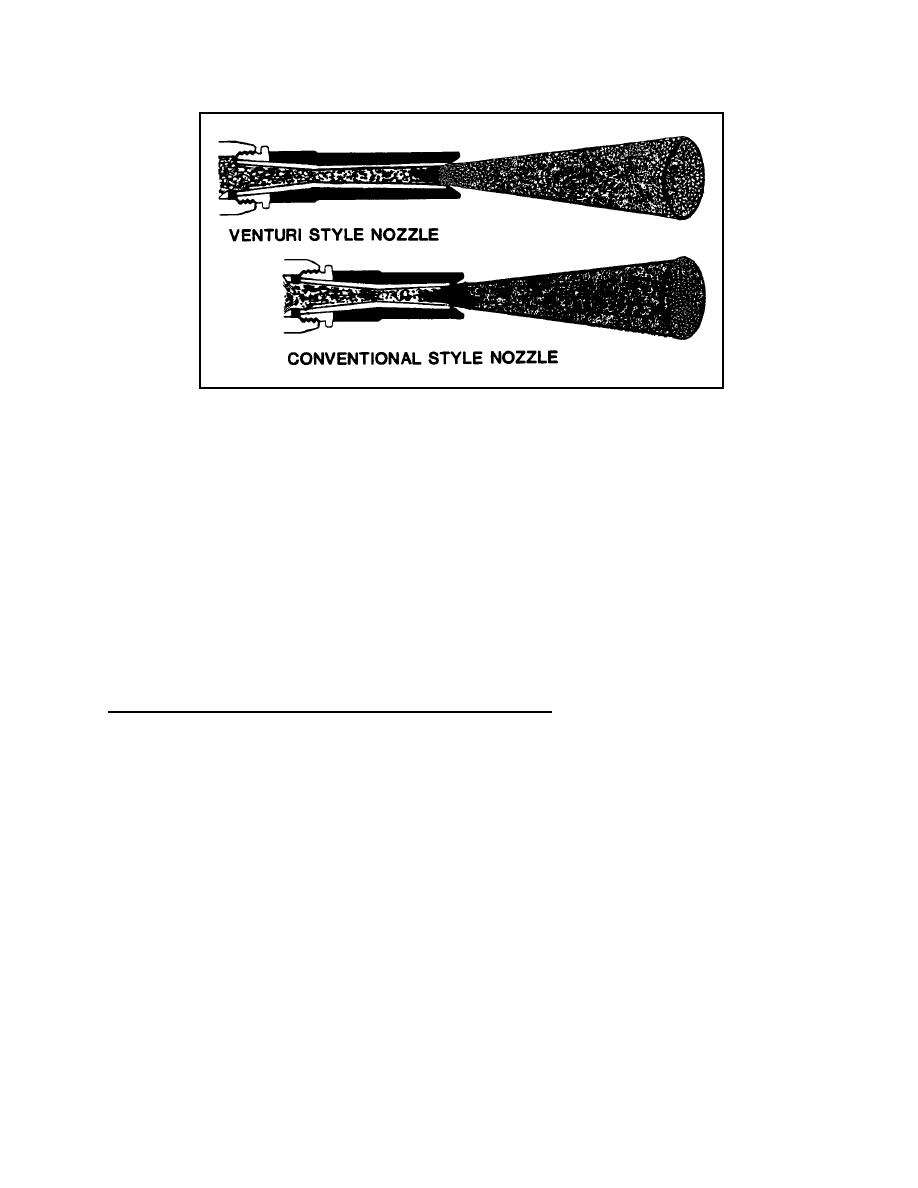
MIL-HDBK-1110
Figure 3
Cross-Sectional Drawing of Nozzles
f) Oil/Moisture Separators. Oils used in the
compressor could contaminate the air supply to the nozzles. To
combat this, oil/moisture separators are installed at the blast
machine. The separators require periodic draining and routine
replacement of filters. Contamination of the air supply can be
detected by a simple blotter test. In this test, a plain, white
blotter is held 24 inches in front of the nozzle with only the
air flowing (i.e., the abrasive flow is turned off) for 1 to 2
minutes. If stains appear on the blotter, the air supply is
contaminated and corrective action is required. ASTM D 4285,
Indicating Oil or Water in Compressed Air describes the testing
procedure in more detail.
g) Operators Equipment. The operators equipment
includes a protective helmet and suit. The helmet must be air-
fed when blasting is done in confined or congested areas. To be
effective it must furnish respirable air to the operator at a low
noise level, protect the operator from rebounding abrasive
particles, provide clear vision to the operator, and be
comfortable and not restrictive. Air-fed helmets must have
National Institute of Safety and Hygiene (NIOSH) approval. Refer
to Section 13 for additional information.
h) Wet Blasting. In addition to equipment needed for
dry abrasive blasting, metering, delivery, and monitoring devices
for water are needed.
86



 Previous Page
Previous Page
